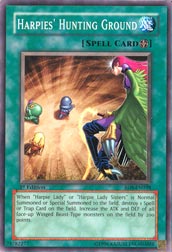In the Yu-Gi-Oh! TCG, trigger effects are effects that activate when a specific event occurs in the duel or when something specific happens to a card. These types of effects are normally identified by the term "when" in card text. "When" will tell you what event the card’s effect is looking for in order to activate. The occurrence of the event allowing the trigger effect to be activated shall be referred to as "triggering" the trigger effect.
The remainder of the effect tells you what you will do when the effect resolves. It also tells you if the trigger effect is mandatory or optional. What makes this distinction?
Mandatory vs. OptionalTrigger effects come in two distinct types: mandatory trigger effects and optional trigger effects.
Mandatory trigger effects usually have the form, "when [this event occurs], [activate this effect]." The event in the "when" clause tells you what event will "trigger" your trigger effect and the text that follows tells you what to do when the effect resolves. These effects don’t give you the option to "pass" if you would rather not activate them. When the event occurs, the effect must trigger, and it doesn’t accept "I don’t want to" as an answer.
Optional trigger effects have the form "when [this event occurs], you can [activate this effect]." When the event in the "when" clause occurs, you have the option of activating the effect or passing. This type of effect can only be activated when it is triggered by the proper event. If additional effects resolve afterward or you are in the process of completing a game action that cannot be interrupted, it can become impossible to activate the effect.

Continuous Spell and Trap Cards with Trigger Effects
The continuous spell Card of Safe Return has an optional trigger effect that players have used with many decks as a means of drawing extra cards. The field spell card Harpies’ Hunting Ground has a trigger effect that activates whenever a Harpie Lady is normal or special summoned. The equip card Legendary Black Belt has a trigger effect that activates when the equipped monster destroys an opponent’s monster in battle and sends it to the graveyard.
These trigger effects don’t do anything when you first activate the card. The trigger effects can only be triggered after the card has successfully resolved. If you activate Harpies’ Hunting Ground and chain Hysteric Party, you won’t get to destroy a spell or trap card. Harpies’ Hunting Ground needs to resolve before Harpie Lady is normal or special summoned.

Common Trigger Effect Wordings
"When this card is summoned
. . ." This is a common expression you will see many times, with several variations. This trigger effect is triggered when the monster is successfully normal-, flip-, or special summoned. If the summon is negated using cards like Solemn Judgment or Black Horn of Heaven, the trigger effect won’t activate. Sometimes this style of trigger effect will be limited specifically to a normal summon, tribute summon, flip summon, or special summon. When this happens the effect will specify which type of summon is necessary.
"When this card is destroyed by battle and sent to the graveyard . . ." This effect activates at the end of the damage step, when monsters that are destroyed by battle are sent to the graveyard. The destroyed monster must be placed into the graveyard for this trigger effect to activate. If the destroyed monster is shuffled back into a deck or removed from play instead, this effect will not trigger. You will also find variations that trigger when your monster destroys another in battle and sends it to the graveyard, like Hydrogeddon.
The shorter effect, "When this card is destroyed by battle . . ," works differently. This trigger effect still needs to destroy a monster in battle, but it isn’t picky about what happens to the monster afterward. Even if the destroyed monster is removed from play instead of being sent to the graveyard, this effect will still trigger. This trigger effect also activates at the end of the damage step, when the monster destroyed in battle should be sent to the graveyard. However, remember that the destination is unimportant in this case.
"When this card is sent from the field to the Graveyard . . ." This effect activates if the monster is destroyed, tributed, or sent from the field to the graveyard to pay a cost. Monsters can be "sent to the graveyard" in many ways, and this general form includes most of them. In order to trigger the effect, the monster must reach the graveyard. If it is removed from play or returned to the deck instead, this trigger effect cannot activate.
"When this card inflicts Battle Damage to your opponent . . ." This effect activates in the damage step, after damage calculation. It is used by monsters like Don Zaloog, Airknight Parshath, and trap cards like Robbin’ Goblin and Damage = Reptile. In the flow of the damage step, these effects activate before the flip effects of the attacked monster activate . . . which applies when these monsters apply piercing damage. When Airknight Parshath attacks a set Morphing Jar, Airknight Parshath’s effect activates and resolves before Morphing Jar, so the drawn card will be discarded by Morphing Jar’s effect.
"When this card is destroyed by your opponent’s card effect. . ." This effect is triggered if your card is on the field, in your hand, or in your deck when it is destroyed. You can find this effect on cards like Grandmaster of the Six Samurai, but other variations do exist. Guardian Tryce has a similar effect, but it does not care who is responsible for its destruction or even how it happens.
Next week, we begin with mandatory trigger effects. Until then, send all comments and questions to Curtis@Metagame.com.